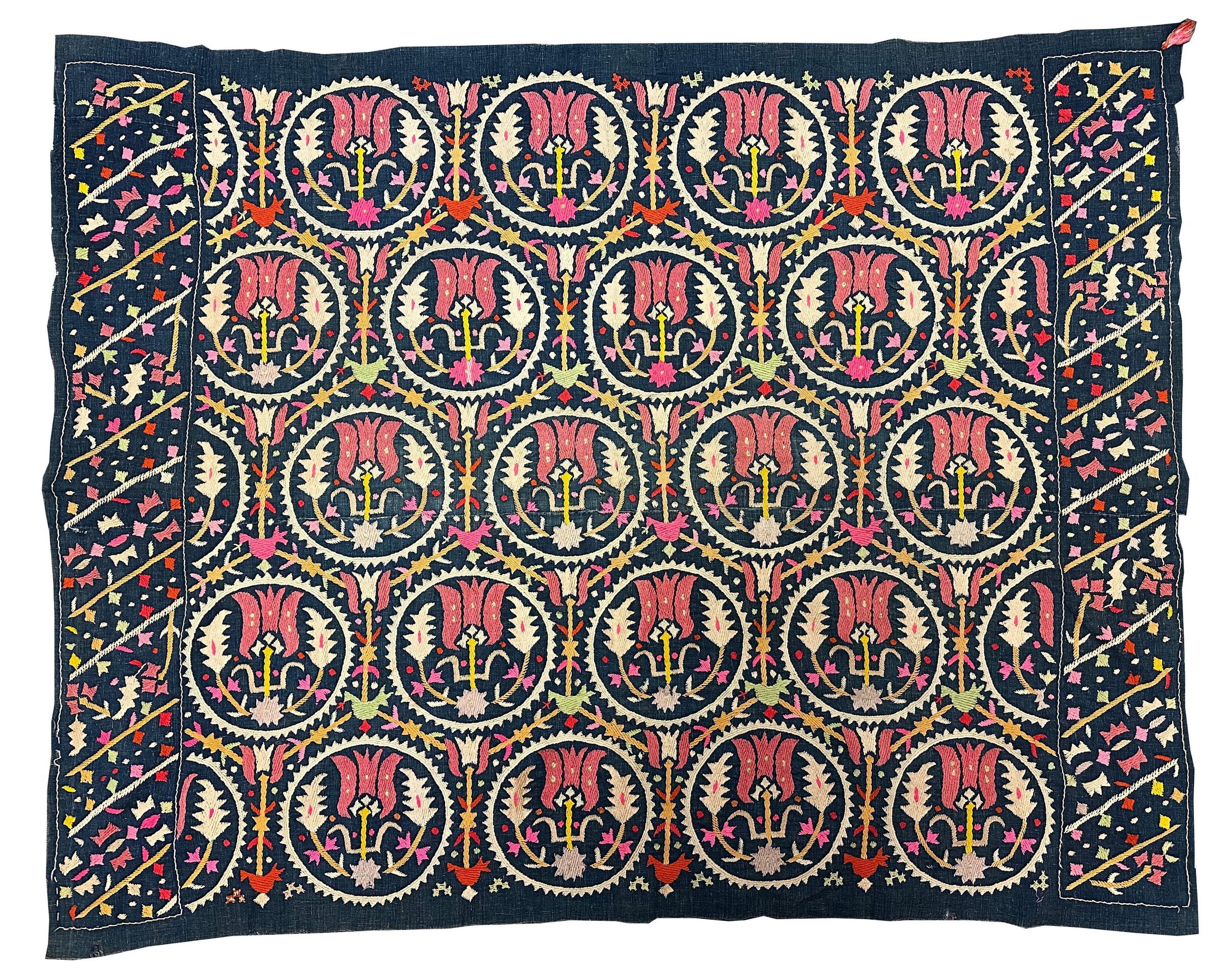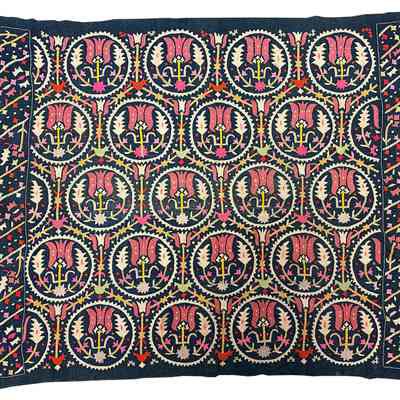Marash Embroidery

Name/Title
Marash EmbroideryDescription
Historically, Marash was home to a diverse population, including a vibrant Armenian community celebrated for their exceptional skills in embroidery, weaving, and metalwork. These artisans played a vital role in shaping the region's textile arts, blending their own traditions with broader Ottoman influences. Armenian needlework from Marash is particularly noted for its intricate, symmetrical designs inspired by nature, geometric patterns, and religious motifs. A notable example is a large textile featuring horizontal rows of embroidered flowers, which may have been used as a hanging or tablecloth. These artistic influences continue to be seen in the floral, vine, and cross-like geometric patterns characteristic of Marash embroidery today. Marash was an important center for weaving and dyeing cotton. The cotton grown locally provided the fabric and thread used in embroidery. Nearly everything—from carpets to nightgowns—was made using cotton textiles. Two distinct types of needlework developed in Marash: one is the visible or flat embroidery known as "atlaslama" (called "hartagar" or “hay-stitch” in Armenian), and the other is a more complex hidden embroidery called "irga" (known as "kağdnagar" in Armenian). While atlaslama could be found in other provinces, irga embroidery was unique to the Marash region. "Atlaslama" is a Turkish descriptive word meaning "to atlas," referring to the smooth, satin-like quality of the stitch. This satin—or flat—stitch is a form of Marash work, though it is not as widely used today as the interlaced nakash stitch. Unlike the popular nakash embroideries, atlazlama embroideries are rarely seen today. A Marash textile featuring atlazlama, such as the one discussed earlier, was likely created as a covering or divider. The repeating geometric and floral patterns are thought to be inspired by the silk-patterned cloths popular in the 18th century. The color palette of Marash embroidery—dominated by deep blues and reds—is often interpreted as a continuation of medieval Armenian textile tradition. Patterns representing the four elements and resembling crosses are commonly found, reflecting both symbolic and religious influences. Armenian artisans were also known for their use of metallic threads, including gold and silver, which gave Marash embroidery its distinctive luxurious and three-dimensional appearance. This tradition of creating richly embroidered textiles for religious and ceremonial purposes—such as church vestments and altar cloths—likely inspired the ceremonial use of Marash embroidery in weddings and other significant events. When Armenians from Marash migrated to places like Aleppo, they brought their needlework with them. While the materials and patterns evolved in their new surroundings, the pieces remained rooted in traditional craftsmanship, preserving the cultural legacy of Marash embroidery.Category
Textile
